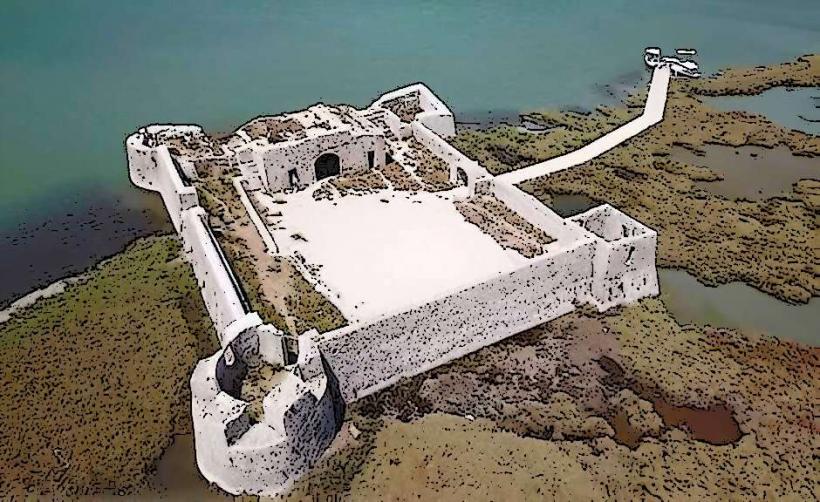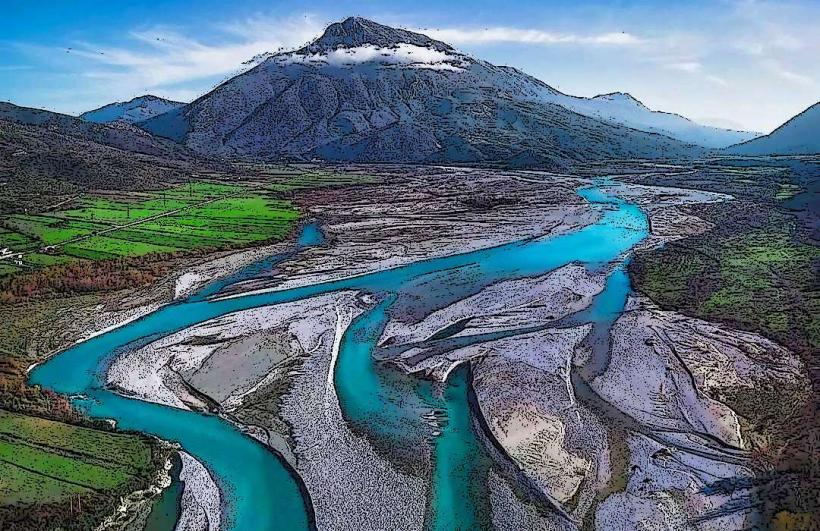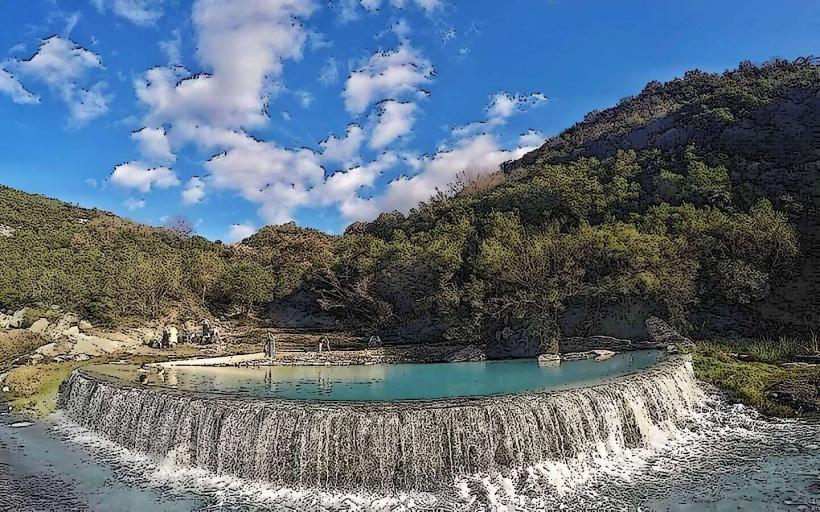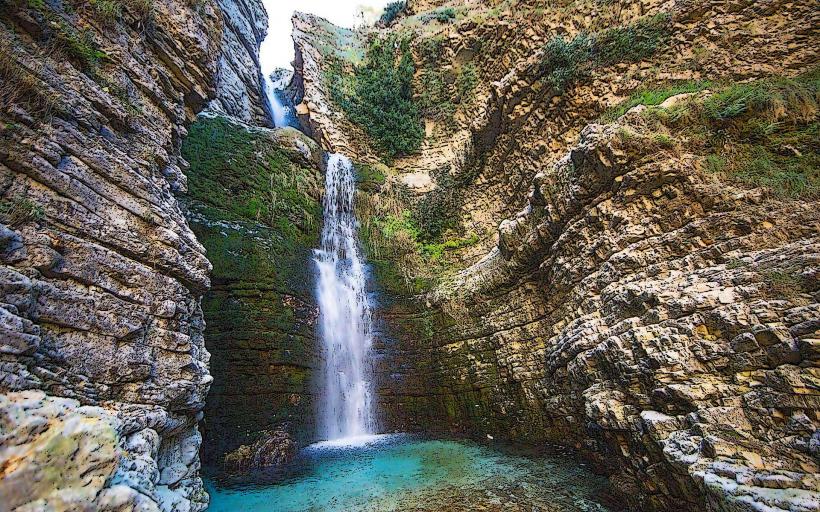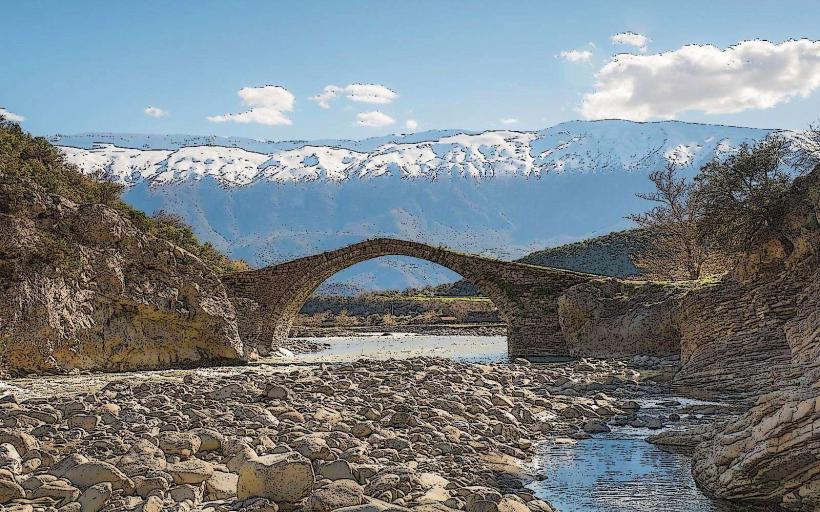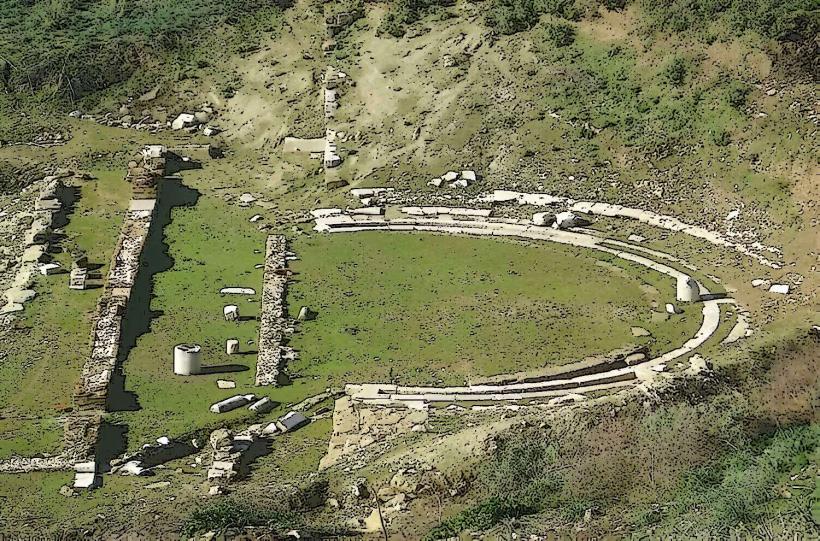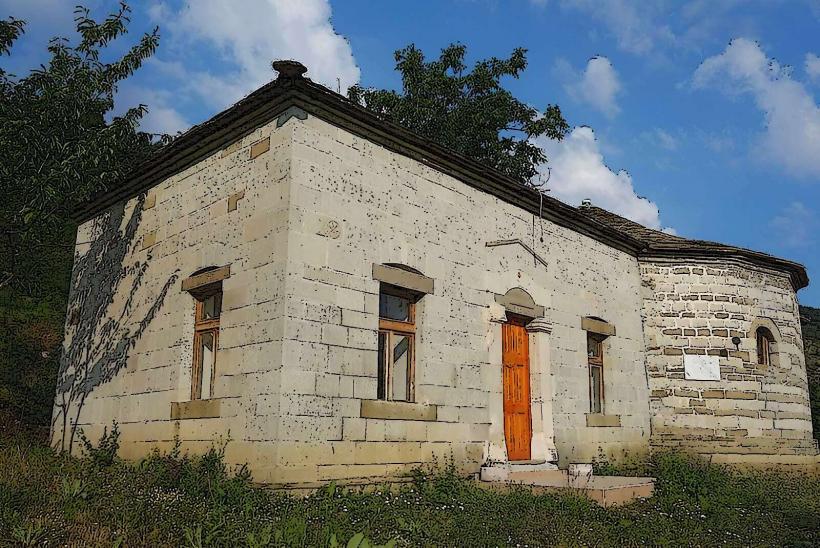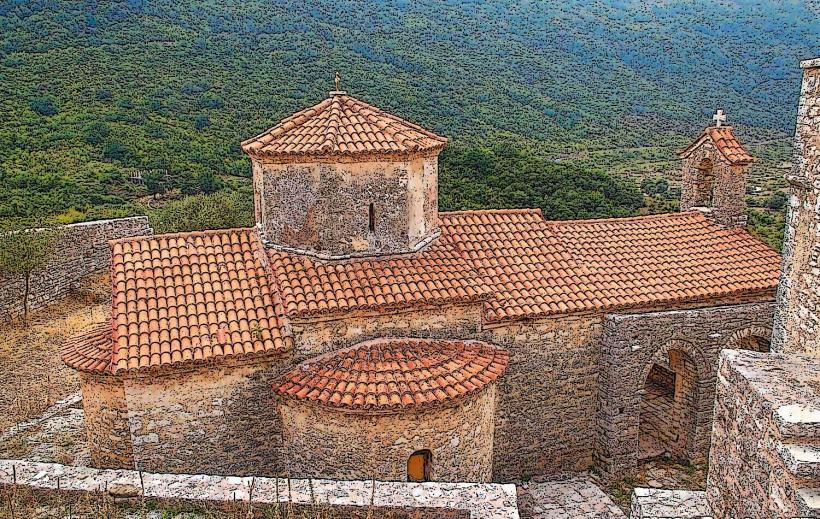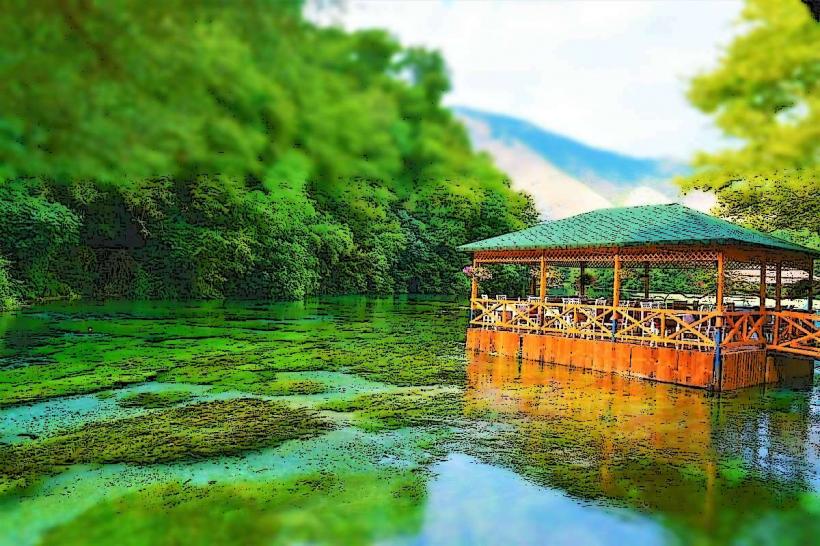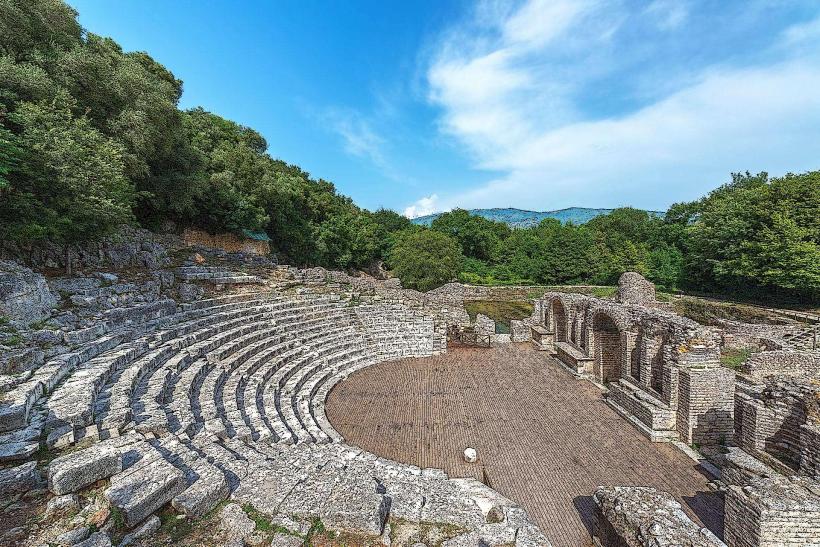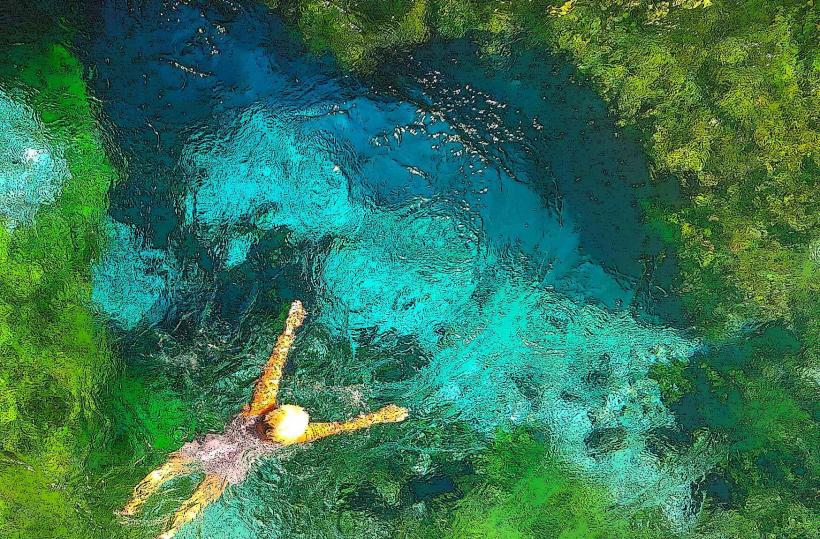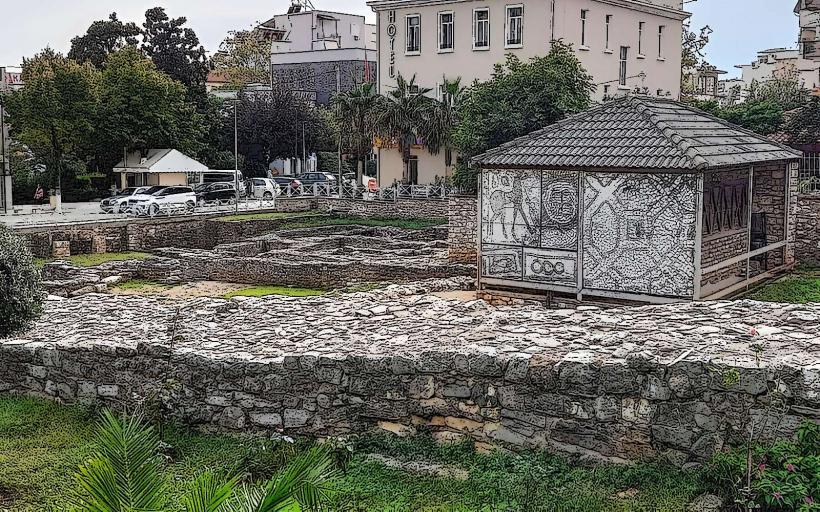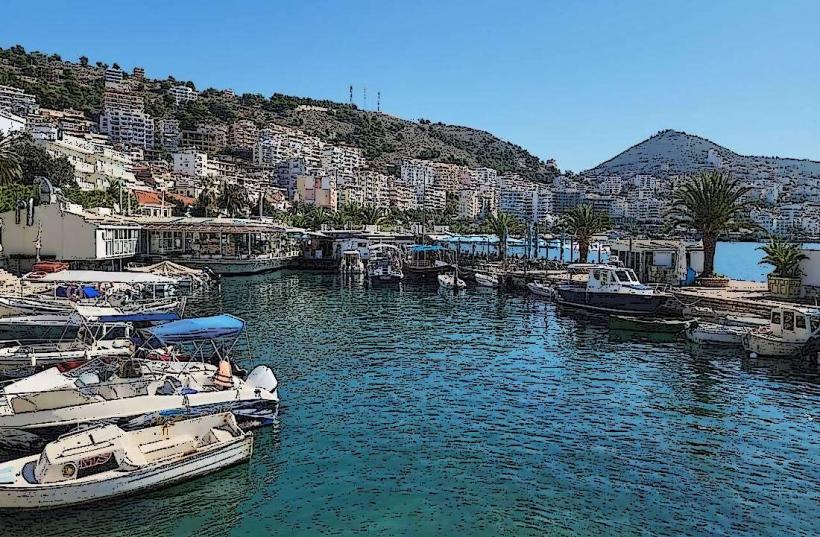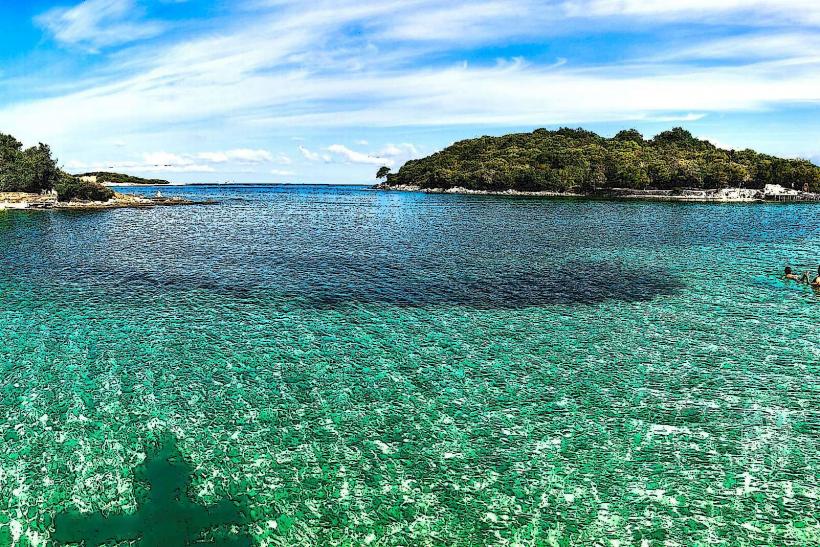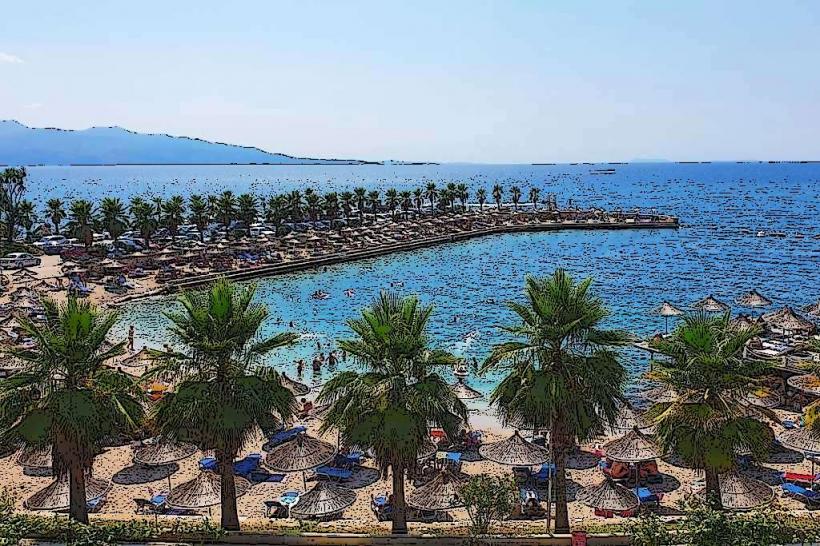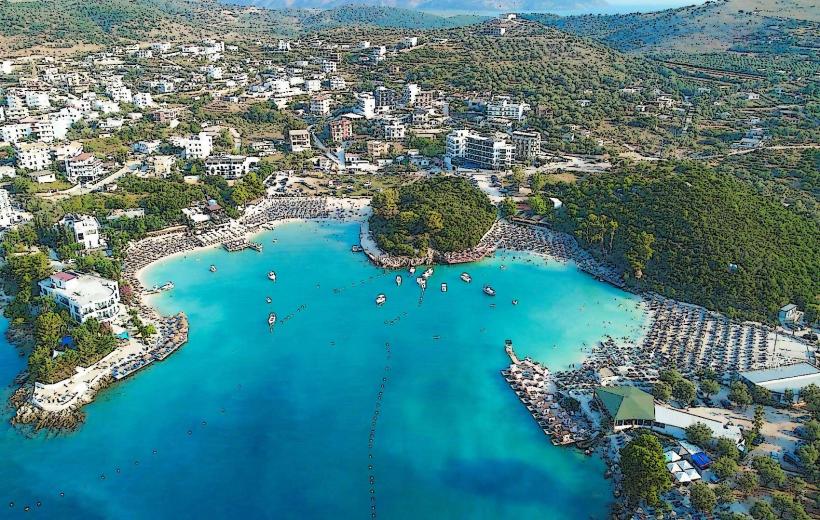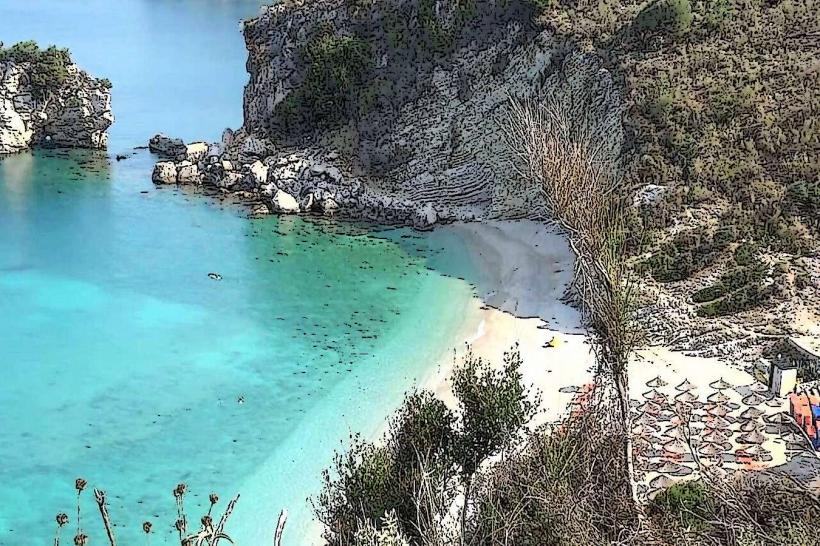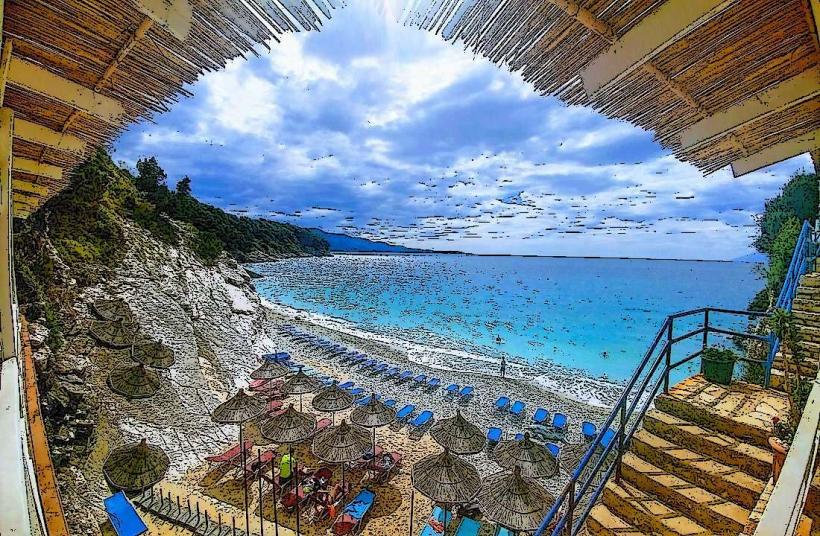Information
Landmark: Monastery of Forty SaintsCity: Sarande
Country: Albania
Continent: Europe
The Monastery of Forty Saints (Albanian: Manastiri i Shënjtërit 40), also known as the Monastery of the Forty Martyrs, is an ancient religious site located on a hill near the city of Saranda, in southern Albania. It is one of the most significant historical and cultural landmarks in the region, known for its stunning views, its religious history, and its connection to Albanian Orthodox Christianity.
Overview of the Monastery of Forty Saints
Location and Setting:
- The monastery is situated on a hill overlooking Saranda and the Ionian Sea, offering breathtaking views of the surrounding area, including the nearby Greek island of Corfu. The location provides a serene and peaceful environment for visitors and pilgrims alike.
- The Monastery of Forty Saints is about 4 km from the center of Saranda, making it easily accessible by car or a short hike up the hill. The site offers a combination of historical, spiritual, and natural beauty.
Historical Significance:
- The Monastery of Forty Saints is named after the Forty Martyrs of Sebaste (known in Albanian as Shenjtorët e Sebastes), a group of Christian soldiers who were martyred for their faith during the early 4th century. According to Christian tradition, the forty martyrs were soldiers in the Roman army who refused to renounce their Christian beliefs and were executed by drowning.
- The monastery itself was built during the Byzantine period (around the 6th century CE), and it was an important center of Orthodox Christianity in the region. It is dedicated to the Forty Martyrs and has been a pilgrimage site for centuries.
- The monastery played a significant role in the religious and cultural life of the region, surviving through various periods of Ottoman rule, invasions, and other challenges.
Architectural Features:
- The Monastery of Forty Saints features traditional Byzantine architecture, with elements such as arched doorways, stone walls, and frescoes that once adorned the interior of the church. Although much of the building has fallen into ruin over the centuries, significant parts of the monastery remain, including the remains of the main church and surrounding structures.
- The monastery’s architecture is a blend of Byzantine and Albanian Orthodox styles, with an emphasis on simplicity and spiritual harmony. The location, perched on a hill, was also carefully chosen for its natural beauty and symbolic connection to the heavens.
The Ruins and the Church:
- The main church of the monastery, although largely in ruins, still has remnants of mosaic floors and frescoes that depict religious scenes. These artworks are invaluable for historians and art lovers, as they provide insight into the religious culture of the region during the Byzantine era.
- Surrounding the main church, there are the remains of other buildings and structures, including cells for the monks, a courtyard, and storage areas. These ruins reflect the once-thriving monastic community that lived and worshiped here.
Legend of the Forty Martyrs
The monastery is dedicated to the Forty Martyrs of Sebaste, whose story has deep roots in both Christian tradition and local legend. According to the story, the forty soldiers were part of a Roman legion stationed in Sebaste (modern-day Sivas, Turkey). When ordered to sacrifice to the Roman gods, they refused and declared their allegiance to Christianity.
The soldiers were sentenced to death by drowning in an icy pond. Before they were executed, they were forced to stand in the cold for hours, and one by one, they died. However, one of them, unable to endure the cold, fled the scene but later regretted his decision. According to the legend, he returned to the site to die with the others, joining them in their martyrdom. Miraculously, after their deaths, their bodies remained incorrupt.
The forty martyrs became symbols of steadfast faith and courage, and their story inspired the construction of many churches and monasteries dedicated to them, including the Monastery of Forty Saints in Saranda.
Visiting the Monastery of Forty Saints
Scenic Views:
- One of the main attractions of the monastery is its panoramic view of Saranda, the Ionian Sea, and the island of Corfu. Visitors can enjoy a tranquil experience, taking in the natural beauty of the landscape while reflecting on the spiritual history of the site.
Religious and Cultural Significance:
- The monastery remains a place of pilgrimage for Orthodox Christians, particularly those from Albania and Greece. It is a symbol of faith, resilience, and the region's rich Christian heritage.
- While the monastery is not in active use today, its religious significance continues to be felt, especially during special religious events such as the feast day of the Forty Martyrs (celebrated on March 9th in the Orthodox Christian calendar).
The Ruins:
- Visitors can explore the ruins of the monastery, including the church, courtyard, and surrounding structures. The site provides a fascinating look at the architectural style of the period and the way early Christian monasteries were designed.
- The remains of the frescoes and mosaic floors are among the most valuable features of the site, offering insight into the artistry and religious iconography of the Byzantine period.
Hiking to the Monastery:
- Reaching the monastery requires a bit of effort, as visitors must either drive or take a short hike up the hill to reach the site. The climb, though moderate, rewards visitors with stunning views of the surrounding area, including Saranda, the sea, and the nearby hills.
Best Time to Visit:
- The best time to visit the Monastery of Forty Saints is during the spring and fall, when the weather is pleasant and ideal for hiking and exploring outdoor sites. The summer months can be hot, so early mornings or late afternoons are preferable for those looking to avoid the midday heat.
Conclusion
The Monastery of Forty Saints is a captivating and historically significant site that combines religious heritage, Byzantine architecture, and stunning natural beauty. Whether you're visiting for its spiritual significance, the archaeological interest, or the scenic views, the monastery offers a peaceful and reflective experience. Its rich history and legendary connection to the Forty Martyrs make it a must-see destination for anyone exploring the historical and cultural heart of southern Albania.

